American Political Dreams
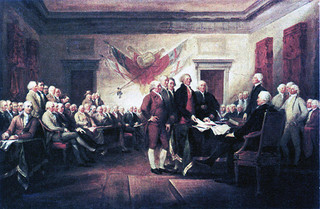 Americans are children of the dream. The dream lives when Dr. Martin Luther King tells a million followers on the Washington Mall, “I have a dream”. When Senator Ted Kennedy, after the death of his brother, the fallen American President, says that “The dream lives on: the dream shall never die”. When a young Senator from Illinois, Barack Obama, writes of the “Dreams of My Father”.
Americans are children of the dream. The dream lives when Dr. Martin Luther King tells a million followers on the Washington Mall, “I have a dream”. When Senator Ted Kennedy, after the death of his brother, the fallen American President, says that “The dream lives on: the dream shall never die”. When a young Senator from Illinois, Barack Obama, writes of the “Dreams of My Father”.
The American dream is the dominant political narrative, the secular national religion. It interprets the meaning of political lives. America’s political identity lives in the dream. The dream begins with a story of virgin birth of a great nation in a “new world”, a wilderness waiting to awaken at the touch of the redeemer. American heroes begin an epic journey, settling first the shores and then the interior of a great new continent. Explorers and colonists seek new lands. The Founding Fathers follow. They are the secular saints, the magic people of a new democracy.
Thomas Jefferson writes a Declaration of Independence that tells Americans that they are citizens of a great nation, endowed by their creator with certain inalienable rights, including life, liberty, and the pursuit of happiness.
The Founding Fathers craft the Constitution of political genius that embeds those rights in larger vision of institutional democracy. They bequeath to their less political heirs the blessings of freedom. Later generations shape a more perfect union and extend the blessings of liberty.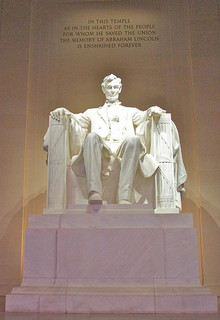
Abraham Lincoln, in his Gettysburg Address, recalls that “Four score and seven years ago our fathers brought forth, upon this continent, a new nation, conceived in Liberty, and dedicated to the proposition that all men are created equal.” He resolves that “this nation shall have a new birth of freedom; and that this government of the people, by the people, for the people, shall not perish from the earth.”
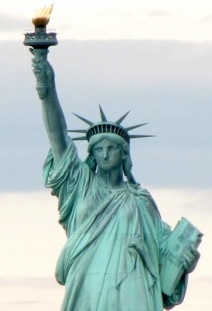 The Statue of Liberty welcomes later refugees. “Give me your tired, your poor, Your huddled masses yearning to breathe free,” the inscribed Emma Lazarus poem exhorts, “The wretched refuse of your teeming shore. Send these, the homeless, tempest-tost to me”
The Statue of Liberty welcomes later refugees. “Give me your tired, your poor, Your huddled masses yearning to breathe free,” the inscribed Emma Lazarus poem exhorts, “The wretched refuse of your teeming shore. Send these, the homeless, tempest-tost to me”
The dream of America also extends a story of peace and prosperity to American foreign policy. The United States does not seek foreign adventures. George Washington in his farewell address famously warns against entangling alliances. And President Monroe’s doctrine extends American protection from foreign rulers to all of the Americas. The United States fights the Revolutionary War, the War of 1812, and the Spanish-American War against imperial Britain and Spain. US purchases of Louisiana and Alaska bring new lands into America from French and Russian sovereigns. The Mexican war pushes back against imperial ambitions, later articulated in the reign of Maximilian I of Austria.
American Political Shadows
The American political dream is a searchlight. It illuminates the brightest political aspirations and successes of Americans’ best selves. It is the warm story that about the sunny uplands of a magnificent continent, America the beautiful.
In the dream, Americans are children of light. Yet shadow stories recount that they are also children of darkness. The light shows the beauty in political lives, but also highlights the dark, cold valleys. It shows the way, but also illuminates failures. There are ugly hollows in the national political landscape where the world is not reborn anew, but the present and future repeat the cruel experiences of older worlds. Life is disrespected, liberty caged in, and the pursuit of happiness a mirage. If the dream exists, it is far and faint. The best leaders and the best natures call those who hear them to the dream, and they may respond, but the dream itself does not always and everywhere answer back.
Sometimes Americans see themselves as depicted by the dreams; at other times, darker, shadow selves appear. In Oliver Stone’s film Nixon, President Nixon, on the eve of his resignation, wanders around in the White House. He ends up in front of Kennedy’s portrait, remarks: “When they look at you, they see themselves how they’d like to be, and when they look at me, they see themselves as they are.”
The dream of American democracy begins in the self evident truths of life, liberty, and the pursuit of happiness. The shadow account of America recalls that the new world was not terra nullia, an empty land without inhabitants. The dream world masks America’s dark origins in worlds of imperial exploration (Amerigo Vespucci and Columbus) and conquest (Conquistadores, Indian Wars). It neglects the way that manifest destiny and western expansion swept over earlier indigenous people, who were evicted, expropriated, and murdered. It misses the transformation from a planter-dominated confederation into a modern capitalist and corporate, plutocratic and oligarchic society—America Inc.
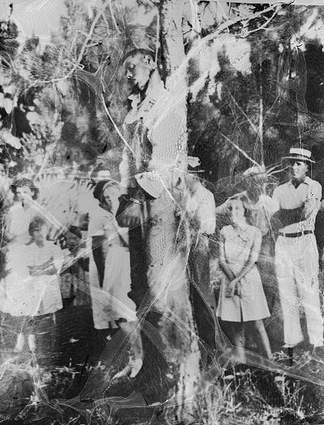 The Founding Fathers are not huddled masses yearning to breathe free, but aristocratic landowners and merchants intent on securing their accrued privileges and liberties to themselves and their heirs. The lives, the fortunes, and the sacred honor, which many of the signers pledge in the Declaration of Independence, are founded on slavery, indentured servitude, and forced labor—human pillars of the private mansions and plantations and the new republic formed to secure them. Numerous hopeful immigrants are turned back at Ellis Island. Many are called, but not all are chosen. Others are allowed to pass through the magic entrance gates, but do not find a land of milk and honey, streets paved with gold. Some perish or return to their earlier homelands, bitter and disappointed, overwhelmed by the lonely individualism and harsh competition for survival in the new hypercapitalist world.
The Founding Fathers are not huddled masses yearning to breathe free, but aristocratic landowners and merchants intent on securing their accrued privileges and liberties to themselves and their heirs. The lives, the fortunes, and the sacred honor, which many of the signers pledge in the Declaration of Independence, are founded on slavery, indentured servitude, and forced labor—human pillars of the private mansions and plantations and the new republic formed to secure them. Numerous hopeful immigrants are turned back at Ellis Island. Many are called, but not all are chosen. Others are allowed to pass through the magic entrance gates, but do not find a land of milk and honey, streets paved with gold. Some perish or return to their earlier homelands, bitter and disappointed, overwhelmed by the lonely individualism and harsh competition for survival in the new hypercapitalist world.
The shadow storyline tells us that the state is born and consolidated in injustice and violence. Lincoln, in his 2nd Inaugural Address, warns that, “if God wills that it (the war) continue until all the wealth piled by the bondsman’s two hundred and fifty years of unrequited toil shall be sunk, and until every drop of blood drawn with the lash shall be paid by another drawn with the sword, as was said three thousand years ago, so still it must be said ‘the judgments of the Lord are true and righteous altogether.’”
Neither the Civil War nor Reconstruction, the exhaustion of westward expansion at the continent’s Pacific Rim, nor the civil rights movement of the 1960’s dissolve the American dilemma of continuing violence and injustice in the shadow of American democracy. Lynching of blacks continues in the American South well into the 20th century. The pain of the lynched is counterbalanced by the satisfaction of the lynchers. The violent death of young black men upholds the political order of domination and dominated.
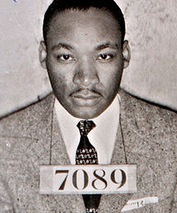 Even as lynching dies out, Southern police force continues to support the segregated Southern racial order. Again, black humiliation is counterbalanced by white satisfaction. The South has moved away from actual physical lynching, but it still gags as it swallows integrated lunch.
Even as lynching dies out, Southern police force continues to support the segregated Southern racial order. Again, black humiliation is counterbalanced by white satisfaction. The South has moved away from actual physical lynching, but it still gags as it swallows integrated lunch.
The dream of national American democracy goes together with the dream of international peace. Domestic freedom and equality coexist within splendid continental isolation, and without entangling international alliances. The shadow narrative of American foreign policy tells a different tale. The United States evolves from an inland, continental empire into a global one. From a weak confederation of independent colonies, the United States morphs into Superpower, engaged in constant and permanent war. Early armed conflicts against the Northeastern Indian tribes 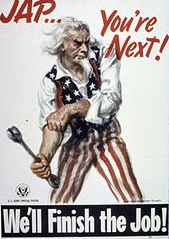 grow into continued Western expansion and the Mexican-American War that continue military operations against hemispheric populations. American military expeditions during World Wars I and II and the Cold War return to the older world and beyond as The United States projects its military reach from North America to an all-encompassing global scale.
grow into continued Western expansion and the Mexican-American War that continue military operations against hemispheric populations. American military expeditions during World Wars I and II and the Cold War return to the older world and beyond as The United States projects its military reach from North America to an all-encompassing global scale.
In the 20th century, American nuclear weapons and counter-insurgency reach ever more deeply into the nooks and crannies of distant lands. United States atomic bombing of Hiroshima and Nagasaki in August 6 and 9, 1945 is the final reply to the Japanese sneak attack on Pearl Harbor on December 7, 1941 and a fitting revenge for young American boys savagely cut down on Pacific islands and beaches and brutal Japanese atrocities against civilian populations. It ends the war in the Pacific without the horror of a bloody invasion of the Japanese homeland. The war ends, not with a whimper, but a big bang. If the Japanese suffer greatly, it is because they have greatly transgressed. Like other dark skinned objects of just American wrath, they deserve what they get – as the US Army poster from 1945 to the right indicates, and the image below from Hiroshima demonstrates.
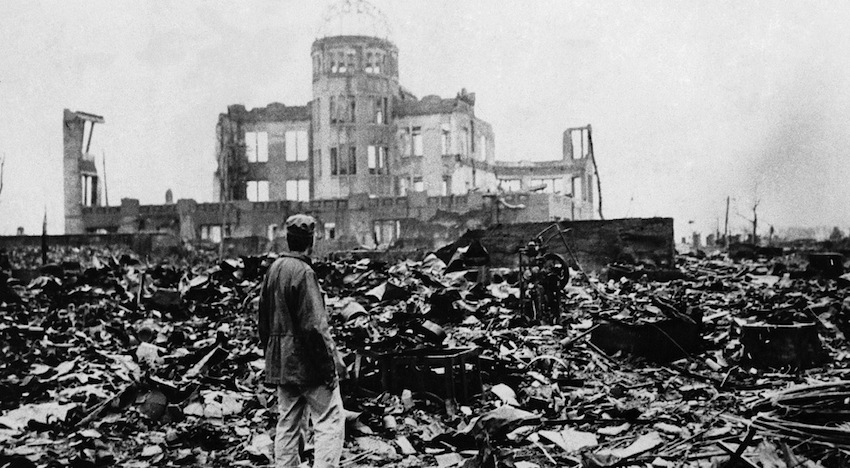
In the 21st century, the United States projects its democratic values through a muscular foreign policy in places like Iraq and Afghanistan. If there are human costs in destroyed and shattered lives, these are emblems of heroism and souvenirs of adventure travel that echo in the dark night of the American soul.
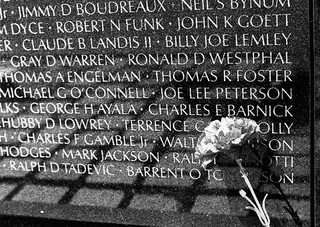 American globalization begins in the dream of universal freedom and harmony and evolves into the permanent global war on terror. The dream of America, its divine mission, exceptionalism and greatness, expresses America’s a drive to extend the highest ambitions of its best self. But, from its dark corners, American globalization hides a deep drive for dominance. The shadow narrative reminds us that America is strongly in touch with its dark side and casts a global political shadow on the rest of the world. American globalization is a triumph of national marketing and public relations.
American globalization begins in the dream of universal freedom and harmony and evolves into the permanent global war on terror. The dream of America, its divine mission, exceptionalism and greatness, expresses America’s a drive to extend the highest ambitions of its best self. But, from its dark corners, American globalization hides a deep drive for dominance. The shadow narrative reminds us that America is strongly in touch with its dark side and casts a global political shadow on the rest of the world. American globalization is a triumph of national marketing and public relations.
The American dream is a hard power softener, the velvet glove around the iron fist of the American shadow. Together, the dream and the shadow provide a mythic frame that makes the world safe and comfortable for Americans.
Mythic America and MythWorld
American dreams and shadows are the good, the bad, and the ugly narratives of America. The American dream is America’s soul. It sets out the myth of democracy, justice, and peace. It describes morning in America, a sunny vision of American reality and American society. The shadow of America is the nightmare twin of the American dream. Beyond the happy talk lurks a darker vision. In place of comforting romantic language, the shadow narrative presents jungle images of continuing savage cruelty, pornographies of violence. Some of the violence is justified by the dream; sometimes it exists for its own sake. The shadow story is taboo, yet widely known – unpatriotic, yet accepted. The shadow is repressed and censored, but it emerges nonetheless. It is in plain sight, but we avert our eyes. The shadow knows what the dreamer does not know. The shadow sees a deep lie, or at least a deep hole, in the heart of the dream. The dream is a story of American identity as one should like it to be. The shadow is an alternate persona that is also part of America as it really is.
The dreams and shadows are parts of Mythic America, a larger mythspace. They are billows in clouds of surrounding myths. Mythic America is a virtual domain where American political stories live and die. It contains all collective dreams and shadows. It also includes mythistories, narratives interpreting centuries of national experience, which evolve over time.
Mythic America evolves over space and time as new characters and events emerge. The dreams, shadows, and mythistories of today are vastly different from what they were:
When Columbus and Hudson sailed;
When the Founding Fathers created their revolution and constitution;
When Abraham Lincoln asked whether a nation “conceived in Liberty, and dedicated to the proposition that all men are created equal… or any nation so conceived and so dedicated, can long endure”;
When Franklin Roosevelt saw “tens of millions of its citizens—a substantial part of its whole population—who at this very moment are denied the greater part of what the very lowest standards of today call the necessities of life… millions of families trying to live on incomes so meager that the pall of family disaster hangs over them day by day…”;
When John Kennedy declared “that the torch has been passed to a new generation of Americans–born in this century, tempered by war, disciplined by a hard and bitter peace, proud of our ancient heritage–and unwilling to witness or permit the slow undoing of those human rights to which this nation has always been committed, and to which we are committed today at home and around the world”;
When Ronald Reagan declared that it was “morning in America.”
Mythic America is part of past history and interpretation of it. Yet it is also powerfully present every day, projected through modern communication. The mythspace flourishes in mainstream and alternative media, television and the internet, Facebook and Twitter. Mythic America holds Americans firmly in its hypnagogic grip, persuading them that the stories are true. It is the dreamweaver that guides them as they sleepwalk.
Even though Americans chase their dreams, and many believe that, when you wish upon a star, dreams can come true, Mythic America does not contain final, permanent truths; it does not contain the unknown and unknowable unknowns. The myths are instead folk tales that present a rhetoric of truth. They present truth claims and scripts for action. Americans may trust the dream and believe, with Dr. Martin Luther King Jr., that the arc of the moral universe is long but it bends toward justice, that one day all Americans shall be free at last. Or, more skeptically, they may observe that there is a continuing predatory hierarchy of dominance and submission. That power never retreats on its own. That power, as John Quincy Adams said, always thinks that it has a great soul. Sometimes we are the tiger. Sometimes we are not. Sometimes we ride it, sometimes we shoot it, sometimes it eats us.
Mythic America tells us that the narratives are the truth, but they are not the truth. They are stories reflecting commonplace traditions. They are beliefs held by particular political communities, standing in place of the truth, as the truth, but they are not the truth with a capital T. A wider truth is not “either /or” but “both/and”; it includes dream and shadow stories, and all the other possible accounts of American political experience. Their persuasive truth value varies over time and space, individuals and issues. The full truth is more inaccessible than any dream or any shadow could represent. There is always more to any single story; and there are always more stories.
In the absence of truth, as seen by God’s eye, Mythic America is populated by political myths of dreams, shadows, and shadows of shadows. Myths, common narratives, create the American known world. They establish the preconditions that make political communication and culture, discussion and argument, and the accumulation of knowledge possible. None of the individual myths are true in an absolute sense, but they help Americans collectively describe different facets of political experience and pragmatically guide political action. The myths are also ethical fictions that persuade different people to act in different ways in different situations. In history and in real time, American heroes and villains act out dream and shadow stories.
In a globalizing world, Mythic America does not exist in splendid isolation with no entangling alliances. Mythic America is a part of MythWorld, a global theme park that holds all the dreams and shadows of the world’s people. Some hope that the American dream will illuminate the way for others who desire peace and justice, freedom and democracy. At the same time, the American shadow can blight the dreams of others, for example, in situations where the United States directly supports regimes that are far from democratic or peaceful. The American shadow—American interests, neocolonial patterns of indirect rule, corporate penetration of foreign economies, imperial overreach, and military force—is also part of American globalization.
Americans project their own myths into MythWorld, but must also adapt to the myths of multiple others. American myths mix with many different voices telling diverse stories—individual, group, local, national, regional, and global– in MythWorld. Sometimes, as in the case of the United Nations, different myths mingle peacefully in the corridors of global power. At other times and places, there can be a dramatic clash of dreams and shadows. In the airline attacks of 9/11, when the planes met the Twin Towers, competing myths collided with explosive consequences.
Beyond American shores, there are dreams and shadows in other parts of MythWorld. The dreams of Mythic Israel, for example, focus on surviving the Holocaust, the long hoped-for return to the Holy Land, and the realization of “next year in Jerusalem.” Israelis talk less about their shadows–continuing expropriation, exploitation, and exclusion of native Palestinians. Mythic Palestine, in turn, has its own Holocaust, the Nakba. Palestinians mourn their dead. They regret their lost shops and orchards. They would wish 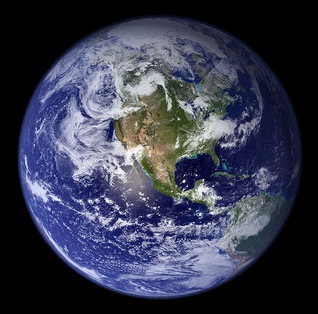 repatriation to the lands from which they were expelled, compensation, and their own state. No more than the Israelis do they wish to discuss the shadows of violence and death that live beside the peace process. Myths are a form of power–soft power. Both sides would speak truth to the power of the other. Each side would also speak hard military power to uphold its own truths and gladly crush the truths and existence of non-believers.
repatriation to the lands from which they were expelled, compensation, and their own state. No more than the Israelis do they wish to discuss the shadows of violence and death that live beside the peace process. Myths are a form of power–soft power. Both sides would speak truth to the power of the other. Each side would also speak hard military power to uphold its own truths and gladly crush the truths and existence of non-believers.
Mythworld’s clouds glide across our blue planet, enveloping us in billows of dreams and shadows that wrap and trap us. Mythic America floats through global mythspace. Americans believe themselves to be heroes, exceptional, a beacon to the world. But they encounter others, with their own mythspaces, who also believe that they are heroes, with billions of faces and even more myths. It appears that heroes may be villains as well. Sometimes Mythic America basks in the bright dreaming sunlight of freedom, justice, and peace. Sometimes it wrestles with others’ threatening shadows. And sometimes America must also recognize the dark side of its own repression and violence. In various times and places, America must decide whether to restrain or embrace its shadow in service of the dream, or its dream in service of the shadow.
—
Francis A. Beer is Professor Emeritus of Political Science at the University of Colorado, Boulder. His personal blog is Mythic America.
Image credits: Ed Yourdon, Skinnie Minnie, Image Editor, Satomiichimura, myglesias, Martin Burns, NASA.
Cover image courtesy of ImGoingToAzerbaijan
Further Reading on E-International Relations
- Age of the Deal: Donald Trump Won the Battle of Seattle
- Opinion – COVID-19 and the Coming Crisis in America
- Opinion – Bad Omens for America after Liz Cheney’s Defeat
- Opinion – How Coronavirus Exposes Unequal Access to Education in America
- Creating and Mirroring Monsters: Trump’s America and Europe’s Role in It
- The Racial Wealth Gap: Why America Should Discuss Reparations